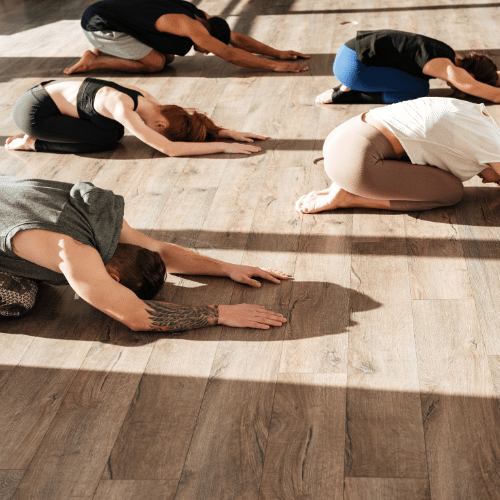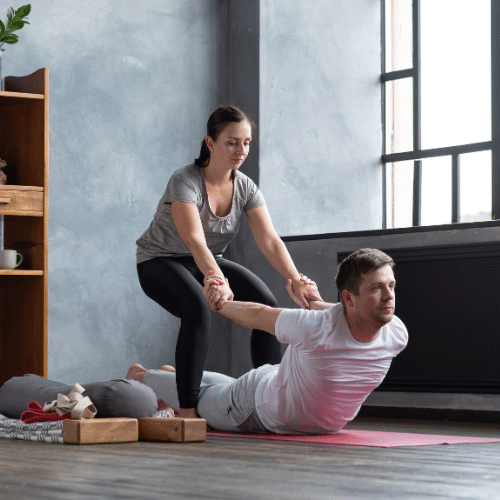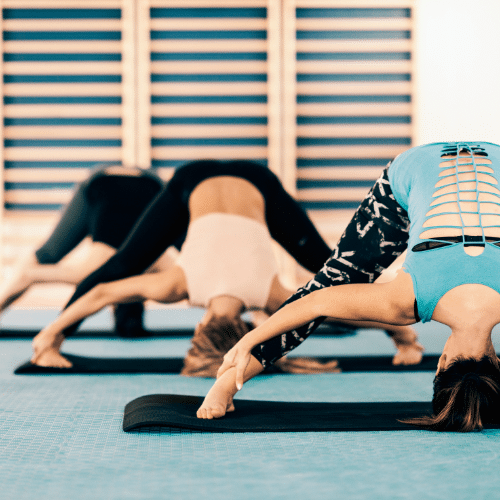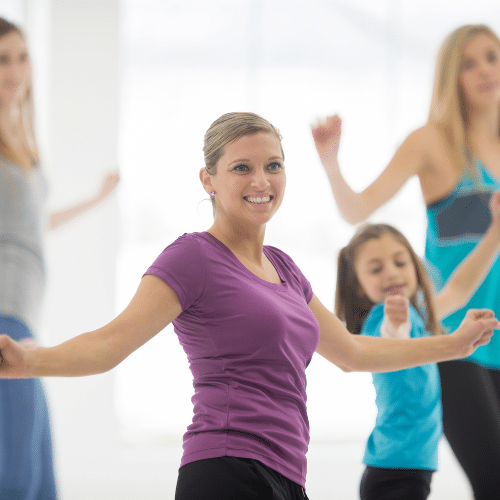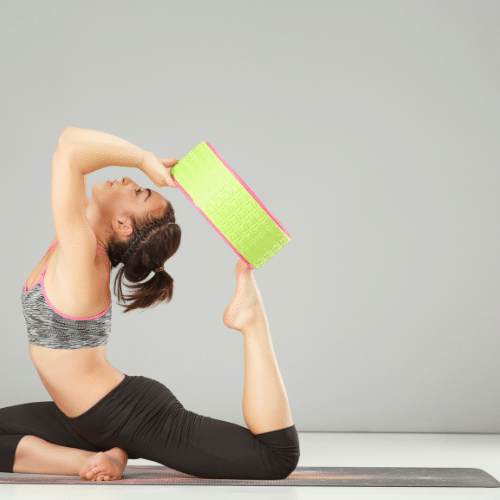Not all yoga is the same, contrary to popular belief. It’s a meditative discipline that doesn’t always require static positions and long controlled breaths. In fact, some types of yoga emphasize movement above all else. This is exactly what anyone can expect from power yoga.
Power yoga is a form of yoga that involves the transition from one pose to another. While this is also what anyone will see in a Hatha yoga class, there’s a greater emphasis on movement and transition. This makes it a form of yoga that’s faster while retaining many of the elements and benefits of traditional forms of yoga.
In short, power yoga is quite different from its traditional counterparts. Read on to learn more about what power yoga is, how it differs from other forms of yoga, and its health benefits.
Power Yoga vs. Traditional Forms of Yoga
Power yoga distinguishes itself from other forms of yoga in the following ways:
The Emphasis on “Flow” or Movement
The biggest difference between power yoga and a traditional form of yoga — like Hatha yoga — is movement. Hatha yoga does contain moments where a person switches from one pose to the next. However, power yoga takes the transition from one pose to another and multiplies it by 10.
Power yoga requires its practitioners to assume certain poses but not hold them for long. They assume one pose then move on to the next in a manner that appears natural and seamless. Experts and practitioners of power yoga term this as “flow.”
The Rate of Inhalation and Exhalation
There’s more inhalation going on in static and traditional forms of yoga. This has a lot to do with the emphasis on holding and establishing the proper poses and positions. Traditional yoga practitioners exhale either at certain moments of a pose or whenever their lung capacity requires it.
On the other hand, in power yoga, practitioners need to exhale when changing positions. The reason for this is that during transitions, the body needs to be fluid or mobile. Fluidity and mobility aren’t possible when the muscles are stiffened by holding one’s breath.
Hence, masters of power yoga emphasize the importance of exhaling during transitions to allow for more fluid movement in between poses.
Novelty
Traditional poses are often in a sequence in yoga. When it comes to traditional forms of yoga like Hatha, Ashtanga, and Kundalini, there are predetermined sequences for poses. Tradition sets the sequences of these poses in stone.
There’s a lot more “creative license” going on in power yoga. Unlike in the other forms of yoga mentioned earlier, instructors can either follow traditional sequences in Vinyasa or come up with their own flows.
This adds novelty to power yoga, making it an attractive alternative for yogis with an inclination for something new and fast.
Pace
Power yoga is faster than traditional yoga. In a single power yoga class, practitioners will be transitioning from one pose to another nearly five times as often as those in traditional yoga classes.
The Health Benefits of Power Yoga
Power yoga is still a form of yoga, so it has a lot of the benefits associated with traditional forms of yoga — especially in the areas of flexibility and breathing. However, it outshines other forms of yoga for doing the following:
Power Yoga Improves Cardiovascular Health
There’s a lot more movement going on with power yoga, meaning that it creates the perfect internal environment for circulation. With repeated movements and muscle contractions come changes in how the blood vessels dilate and constrict.
The changes in circulation occur gradually, causing the heart to work harder — but not too hard. As a result, circulation and the capacity of the heart both improve.
Increased Proprioception
Proprioception is one’s awareness of the positions of various parts of their body. The other term for proprioception is kinesthetic awareness. When a person develops their sense of proprioception, they don’t just move better but will also see improvements in athleticism. Also, studies show that maintaining proprioception is critical in old age due to the increased risk of falls.
Power yoga improves kinesthetic awareness by exposing the practitioner to a variety of poses and movements. With practice, the yogi’s ability to assume difficult poses improves. This improvement results in a better sense of bodily awareness.
Improved Muscle Tone and Isometric Strength
Sure, power yoga may not get the average practitioner a 2.5-bodyweight deadlift or gigantic muscles. Nonetheless, power yoga can lead to an increase in muscle tone owing to the positions and movements. Also, the movements use body weight and tension as resistance, leading to improved isometric strength.
Isometric strength is the foundation of physical strength. It’s the body’s ability to recruit muscles and maintain tension throughout a movement. Without isometric strength, other physical adaptations like brute strength, power, and explosiveness aren’t possible.
With power yoga, a practitioner can develop lean musculature to support the development of isometric strength.
Power Yoga Creates Stress Relief
Stress relief is a major selling point of yoga. This is especially the case when it comes to power yoga. Power yoga may not have as many static or motionless poses as other forms of yoga. However, with the attention paid to breath, power yoga improves respiratory tone. With improved respiratory tone comes several benefits including a reduced sympathetic or “fight or flight” response to events. In other words, power yoga reduces stress.
The Top 3 Power Yoga Positions To Try
Power yoga poses aren’t static. Rather, they’re composed of one pose, a transition movement, and a final pose.
These poses exemplify the above-mentioned. Moreover, these poses are beginner-friendly, meaning anyone can try them.
Plank to Chaturanga Dandasana
This sequence begins with a high plank pose, meaning that the practitioner needs to assume the top position of a pushup. From this position, the practitioner exhales and slowly drops lower, bending the elbows at a 90-degree angle. The practitioner holds the resulting position for a few seconds and inhales.
The practitioner can repeat the movement by going back to the high plank position. The final position can even be a complement to another sequence, depending on the instructor. Done properly, this sequence strengthens the triceps, pectoral muscles, and abdominal wall.
Downward Dog to Upward-Facing Dog
The downward dog can begin from the high plank position. During high plank position, widen the grip slightly. From here, raise the hips and try to bring the head past the arms. From here, exhale, bring the head higher, and lower the hips to the ground in one fluid motion.
This sequence is common across different yoga schools. The only difference is that power yoga requires yogis to perform this sequence faster. The downward dog to upward-facing dog flow is excellent for shoulder and hip flexor health.
High Plank to Dolphin Plank
From the high plank position, take one forearm and have it touch the ground. With the forearm supporting the entire body, slowly lower the other forearm. By the end of the pose, both forearms should be supporting the upper body.
The high plank to dolphin plank sequence is a gateway flow to more difficult poses from the high plank. This flow works the core as well as the anterior shoulders.
Try Power Yoga and Experience the Difference
Power yoga does more than enhance calmness and flexibility. It’s a style of yoga that adds vigor to an already meditative practice, filled with movements that improve heart and musculoskeletal health.
Finding a supportive environment to try power yoga is within reach in Rocklin and Folsom. Try power yoga for 30 days and experience the difference here at Zuda Yoga.


